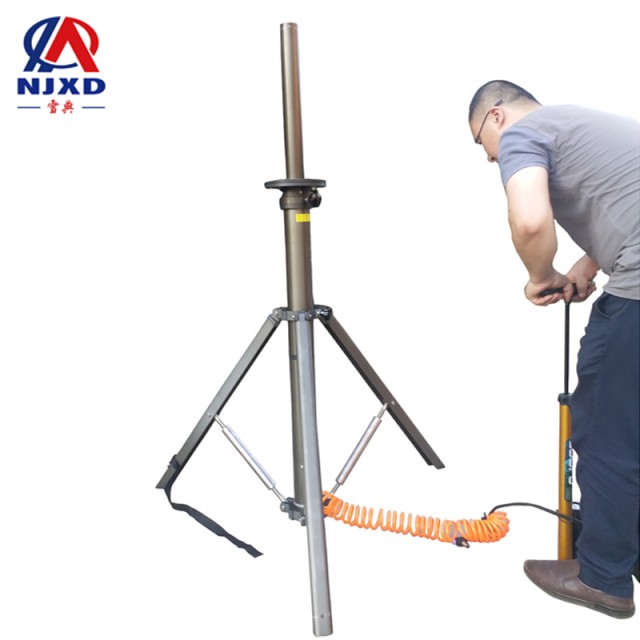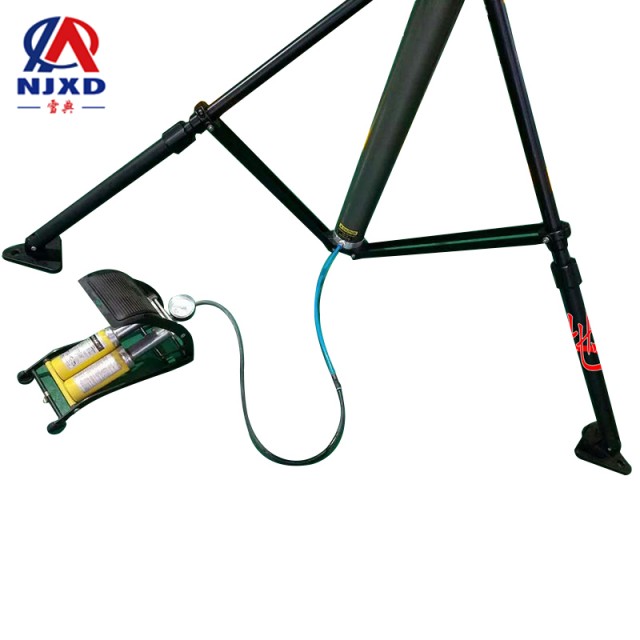NEWS
Lift rod development direction of sealing technology
Time:2021-09-13 View:

Development Direction
Development direction of mechanical seal
Contact seal reduces leakage, reduces wear, improves reliability and occupational stability, and prolongs service life. Non-contact sealing reduces leakage, improves fluid membrane stiffness and occupational stability, and prolongs service life. It can be used in telescopic mast.
Development Trend
With the progress of science and technology and the development of industry, the practical requirements of high-parameter mechanical seals are getting higher and higher. The development trend of mechanical seal technology can be expressed by charts.
Development Characteristics
Technology is constantly innovating new technologies, new concepts, new products, new materials, new processes and new standards are constantly emerging; High parameters (such as high pressure, high speed, high temperature, large diameter), high performance (such as dry operation, zero leakage, oil-free lubricatoin. Slurry) and a large number of high-level sealing products have been developed; Failure mechanism (such as blister scar, hot crack, cavitation, rubber sealing ring bubble expansion and aging, failure analysis (such as reliability and probability) and failure monitoring (such as research and application of fluid membrane, friction state and phase state.
The scope of use continues to expand
Mechanical Seal not only adopts spring valve. Moreover, process equipment (such as reaction kettle, turntable Tower, mixer, centrifuge, etc.) are adopted.
Development requirements pay attention to sealing system
In the past, we only paid attention to individual seals, which has been developed to attach importance to the whole sealing system, and a new sealing system standard centrifugal pump and rotor pump shaft seal system standard have been made.
Pay attention to safety and environmental protection
In the past, we only paid attention to the "leakage" visible to the eyes, and did not pay attention to the "escape" of volatile substances invisible to the eyes; Developed to the requirement of controlling the escape amount of volatile substances, that is to say, from requiring "zero leakage" to requiring "Zero Escape".

Zero Escape seal
Sealing products are very important to protect the environment. Mechanical seals are used to prevent the process fluid from leaking out or escaping when the fluid leaks or escapes, which is harmful to the environment. In order to prevent the process fluid from escaping completely, Zero Escape sealing technology must be promoted. Therefore, all countries in the world attach great importance to the research of Zero Escape sealing technology, research on Zero Escape sealing technology, research and development of zero escape sealing system, Zero Escape sealing and zero escape sealing auxiliary measures. Especially to seal harmful and dangerous Media, Zero Escape sealing, Zero Escape sealing system and zero escape sealing auxiliary measures must be adopted. For petrochemical industry, some key equipment, such as turbine compressor, steam turbine and stirred tank, must adopt Zero Escape gas blocking seal, key hazardous liquid pump must adopt Zero Escape gas blocking seal or dry operation Zero Escape seal and suppression seal.
What is zero escape sealing technology? The so-called zero escape means that the leakage and escape of process fluid in process equipment are equal to zero, that is, no process fluid escapes. Studying the sealing technology of Zero Escape is the sealing technology of zero escape.
Zero Escape sealing technology specific research Zero Escape sealing system, Zero Escape sealing, Zero Escape sealing auxiliary measures and closed machine pump. The Zero Escape sealing system adopts fluid blocking system and fluid buffer system in the Zero Escape sealing system. The fluid blocking system uses the pressure greater than the process fluid pressure and atmospheric pressure (inert gas, steam or oil, oil, water compatible with the process fluid) to block the fluid into the sealed chamber, since the pressure of the blocking fluid is slightly higher than that of the process fluid, a small amount of blocking fluid is allowed to leak the artificial fluid side through the internal seal, and a small amount of blocking fluid may leak into the atmosphere through the external seal. Process fluid blocking fluid atmosphere because the liquid blocking system uses oil, oil or water, the whole pressurized system of blocking liquid is huge and expensive, and oil and gas pollute the environment, therefore, the gas blocking system which is relatively simple, inexpensive and not polluted is adopted. In the fluid buffer system, buffer fluid (compatible with process fluid) whose pressure is less than the process fluid pressure but greater than the atmospheric pressure is injected into the sealed chamber. Because the process fluid pressure is greater than the buffer fluid pressure, A small amount of process fluid flows into the buffer fluid, leads out the sealed chamber with the buffer fluid, and goes to the closed system or vent system to dispose of it. Process fluid buffer fluid atmosphere due to the same reason, the oil, oil or water of the liquid buffer system may leak into the atmosphere, and there is still danger and environmental pollution, so the gas buffer system is adopted. Therefore, gas blocking system and gas buffer system are adopted in Zero Escape sealing technology. Zero Escape seal in order to achieve zero escape, gas blocking system or gas buffer system must be adopted for harmful media and hazardous media. Therefore, it is required to seal the seal that can operate dry in the gas blocking system or the gas buffer system as a zero escape seal. The Zero Escape seal can be single seal, double seal, Cascade seal or multiple seals. If the medium is harmless or non-hazardous inert gas or air, a single seal can be used.
However, for harmful media or hazardous Media, double seal, Cascade seal or multi-stage seal must be adopted to achieve zero escape. In this way, there are internal seals on the process fluid side and external seals and suppression seals on the process fluid side in the Zero Escape seal. In this way, there are various sealing configurations, but there must be primary seal, secondary seal and or auxiliary seal.
Generally speaking, the Zero Escape seal adopts dry operation seal. It can have contact dry operation seal or non-contact dry operation seal. The contact dry operation seal includes ordinary contact mechanical end face seal made of solid lubricating materials, thermal fluid dynamic wedge seal, lip seal, petal-type hard packing seal, soft filling Seal, Oil Seal, magnetic Fluid seal and various group seals, etc. Non-contact dry operation seals include non-contact mechanical face seal, Labyrinth seal, honeycomb seal, throttle ring seal, floating ring seal, spiral seal, Labyrinth spiral seal, impeller seal and combination seal, etc. In the non-contact face seal, the gas face seal with various flow grooves has developed rapidly, and spiral groove, arc groove, leaf groove, trapezoidal groove, shaped groove, shaped groove, Lei Li step surface, oblique plane, straight groove and various special-shaped groove seal.
The common feature of these seals is to increase the bearing capacity and stiffness of the fluid membrane by using various fluid static and dynamic pressure effects of the flow channel, and to form thinner fluid membrane and smaller leakage by using shallow slots. Auxiliary measures of Zero Escape seal the Zero Escape seal system includes the supply of blocking gas and buffer gas, gas filtration (commonly used double filters), control and metering instruments (pressure gauge and pressure switch, differential pressure gauge and differential pressure transmitter, pressure regulator and pressure indicator, throttle orifice plate, flow indicator and flow transmitter), various valves (opening and closing valve, check valve, regulating valve and regulating controller), main seal leakage monitoring and alarm as well as vent gas, condensate discharge or recovery device. Use thermometer indication and cooler when necessary.

CATEGORY
NEWS
- Circular section lift rod adopts feather key to prevent rotation
- Lift rod development direction of sealing technology
- Composition and principle of mechanical seal overview pneumatic lifting bracket
- Technical requirements and precautions of pneumatic lifting mechanical seal
- Failure Treatment of mechanical seal pneumatic telescopic mast